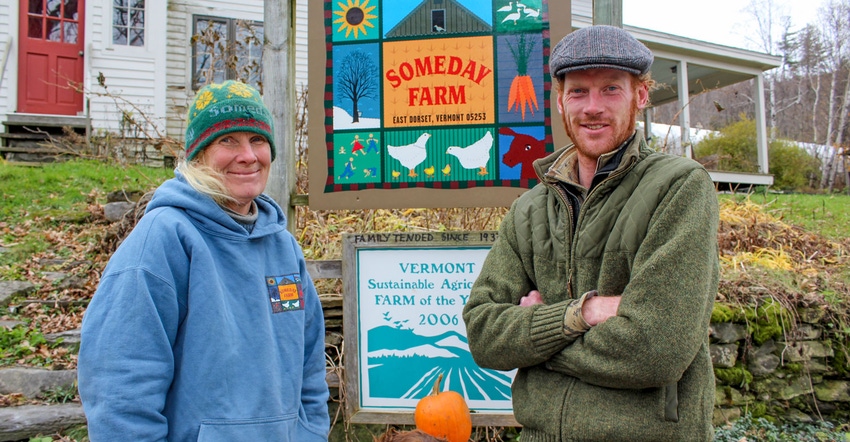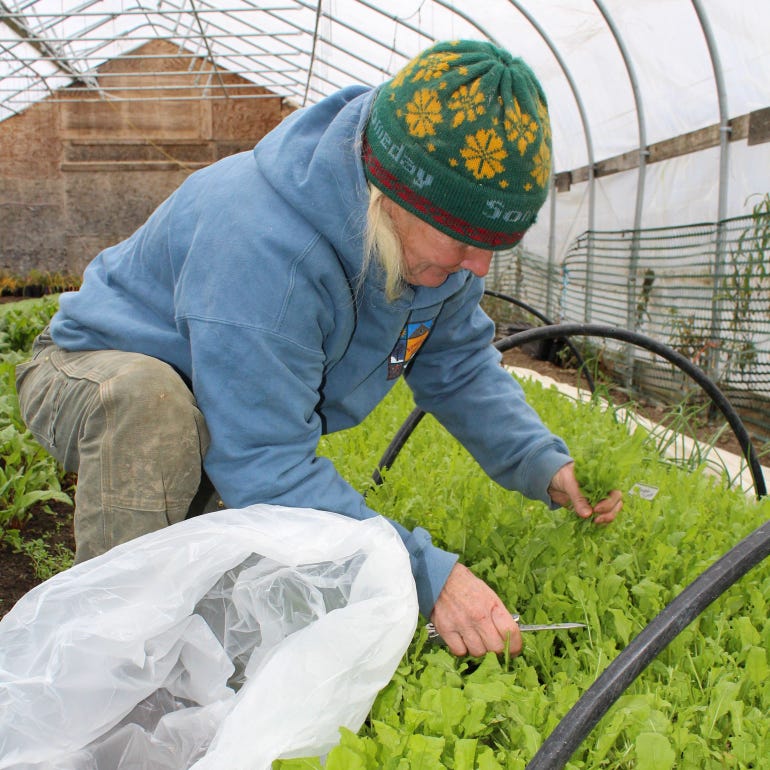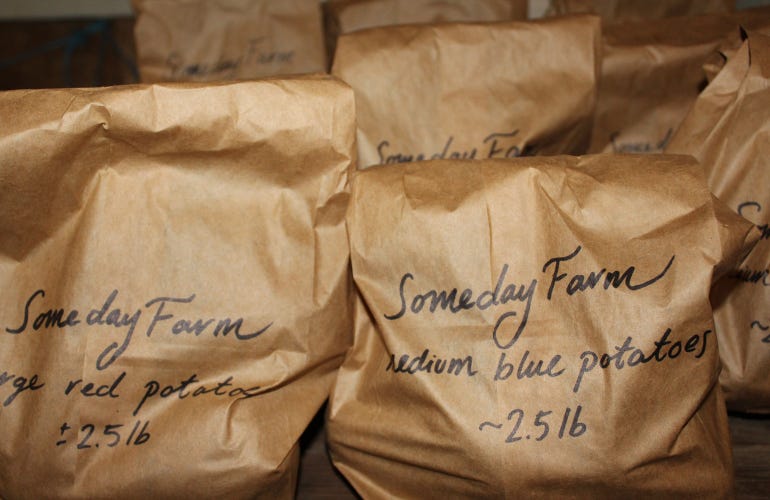January 22, 2019

By Susan Harlow
When Scout Proft started her community-supported agriculture venture 35 years ago, the idea of a “CSA” was just in its infancy. Proft, a third-generation farmer on Someday Farm in East Dorset, Vt., just wanted to get the community involved in her operation.
Community is still at the heart of Proft's vision. She caps her CSA at 100 members, called shareholders. “We want to know their grandchildren, the names of their dogs, their anniversaries,” she says. “We're very community-driven.”
Grabbing a piece of paper, Proft sketches out her idea of a CSA in the form of a parking meter. This is what goes into it: Mutuality, education, trial, environment/community and risk. She is passionate about it, partly because she is not happy with how the CSA idea has been transformed over the years.
“They dump off food one time a week and they don't get community involvement. Everyone who starts a CSA needs to pledge to community involvement; they need to keep true to what a CSA is,” she says.
In the original CSA concept, customers invested upfront in their local farm, providing operating capital for the farmer's growing season, and received part of whatever the farmer harvested. Members shared in both the risks and rewards of the farm operation.
 COLD FRAMES TO GREENHOUSES: When the business started, Proft used what she calls “cold frames” to help grow crops. Now that the business is well-established, she grows greens in six greenhouses.
COLD FRAMES TO GREENHOUSES: When the business started, Proft used what she calls “cold frames” to help grow crops. Now that the business is well-established, she grows greens in six greenhouses.

The number of CSAs has grown quickly in Vermont, and competition has become fierce. The Northeast Organic Farming Association of Vermont, or NOFA-VT, lists 82 CSAs in the state. Their models range from farm pickup to storefront, from take your chances to free choice, from pay in advance to pay with a pre-bought card or cash. Some CSAs are highly specialized, focused on a particular commodity or animal meat.
Building the business
Someday Farm was one of the first CSAs in Vermont and one of the first to get a loan from the Vermont Sustainable Loan Fund. Proft used it to build a greenhouse for her livestock.
“It was just a handshake,” she says. “They told me, ‘You're crazy, but we're going to give you a loan.’”
At first, Proft and her family offered meat birds, flowers and a few vegetables on their farm, which is located on a remote dirt road six miles off a main highway. They set out products and shareholders came by to take what they wanted, up to a certain limit, marking it down on a sheet of paper.
Soon, shareholders were asking for more variety.
 PREPPING FOR SPRING: Angela Saccamango (left), stand manager and shareholder coordinator, is getting the farm’s membership numbers set for the upcoming growing season.
PREPPING FOR SPRING: Angela Saccamango (left), stand manager and shareholder coordinator, is getting the farm’s membership numbers set for the upcoming growing season.

“Summer fruit, buttercrunch lettuce, peas; peas were a big one,” she says. “They really forced our hand.” But she didn't have the capital to expand.
“So, they said, ‘We're going to prepay you for your product, and we'll take the risk,’” she says.
More members, big changes
Angela Saccamango, stand manager and shareholder coordinator, who began as an intern in 2002, works closely with Proft. Saccamango sends out shareholder letters in January, and shareholders send in their money. The farm uses the money to start bedding plants and hiring help, and to buy 6,000 chicks that will grow into meat birds.
“We need to spend $4,000 on seed, $3,000 on chicks,” Proft says. “Even before, we were very, very conscious of costs. We used cold frames, not greenhouses, because cold frames are essentially free. Now, we have six greenhouses for greens.”
Shareholders who sign up before May 1 receive a 5% discount on their purchases. Low-income shareholders can pay in other ways. For example, they can do farm work.
“If someone wants our products and wants to be a shareholder, we make it happen,” she says.
More than 100 varieties of organic fruit and vegetables are grown. Poultry is a big part of Someday Farm with 1,500 pheasants, 1,500 meat chickens and 500 turkeys raised each year, along with 700 laying hens for eggs.
Shareholders can pick up at Someday Farm's farmstand on Route 30, two days a week from May to October. Proft, the face of the farm, is always there with her dogs, and maybe a laying hen or two, talking to people.
The farm also has a new self-serve store, open year-round in nearby Dorset village. Competition has sparked Proft to make changes.
“We have to ask ourselves, ‘How can we be different?’ So, we fill new niches, such as self-service year-round. It's been wonderful,” she says.
The new store is on a farm they began renting three years ago, both for a retail location and for production purposes. It's in a warmer location, in the valley along the Mettowee River, and it gives Proft's son, Eben, in his sixth year as owner of Woodbury Game Birds, a place to raise pheasants. He sells them to restaurants locally as well as in Boston and New York City.
Eben also helps her on the farm with fieldwork and with the turkeys, alongside apprentices and volunteers who work for harvest pay. Her other four children, although not on the farm, are all involved or tied to farming in some way, whether in marketing or in finance, forestry, nutrition or organic wines.
 SELF-SERVE IN WINTER: In order to serve customers year-round, the farm now runs a self-serve store in nearby Dorset, Vt., where customers choose what they want.
SELF-SERVE IN WINTER: In order to serve customers year-round, the farm now runs a self-serve store in nearby Dorset, Vt., where customers choose what they want.

So, what’s next for the 120-acre farm to continue to the fourth generation?
“My kids got together and decided it needs to stay intact,” she says. “They have so many ideas and, I think, in the next four or five years those ideas will become solidified. They're tied to the place emotionally. Because they've heard the stories of their grandparents, it's in their blood, there's a preservation that goes with the passion.”
Harlow writes from Vermont.
You May Also Like




